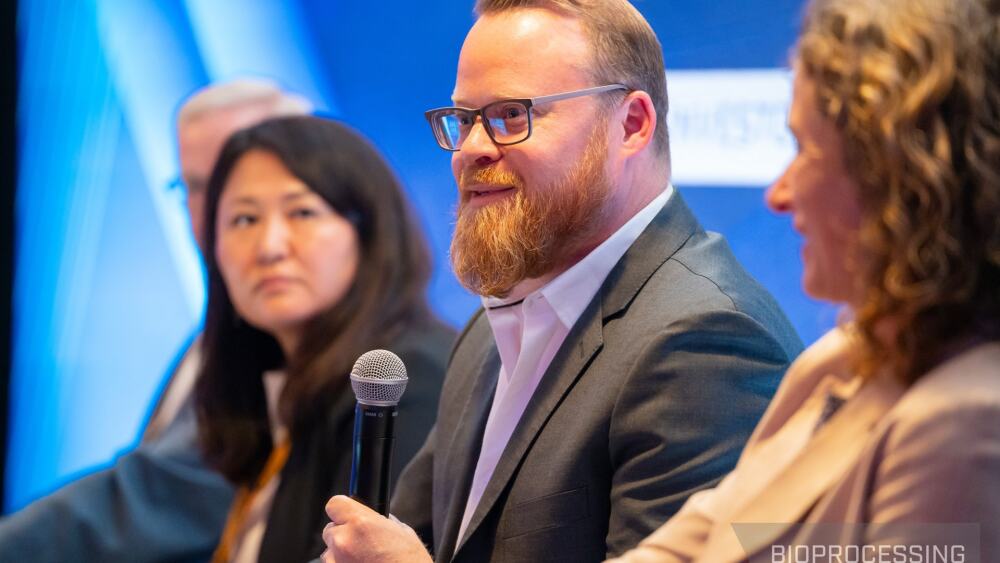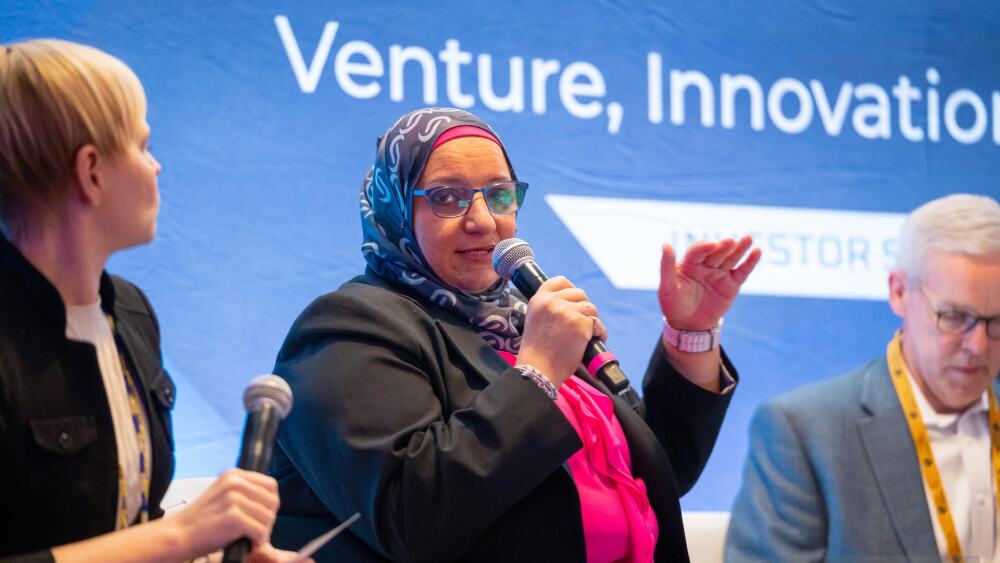As technology continues to evolve, companies should have strategies that incorporate an understand of where they are now, where they want to be, and do they have the talent to get there.
Cambridge Healthtech Institute (CHI) hosted a panel in late August during the Bioprocessing Venture, Innovation & Partnering Conference, which spotlighted AI innovation in bioprocessing and drug development. After considerable discussion surrounding the current state of AI in the industry, the AI & Technology Panel: Navigating Innovation, Technological Advancements, and Evolving Regulations panel offered investors guidance into the future, including partnerships, 2030 strategies and the workforce.
A Private and Public Partnership for 2030 and Beyond
As it is an election year, Sarah Glaven, principal assistant director, biotechnology and biomanufacturing, White House Office of Science and Technology Policy, emphasized that the Executive Office of the President is a separate part of the government from Congress. While the Biden administration believes in partnership, the life sciences industry must keep in mind this separation when addressing the federal government, no matter what administration is in place.
“We are kept very separate from each other. While we learned this in grade school, even as a federal employee, I didn’t fully appreciate how separate we are kept until I started working in the White House,” she stressed. To be most effective, Glaven suggested that the industry take the same message to Congress, the White House or an government agency. “Make sure your messaging is coming full circle across everyone you engage with in the government, and it is consistent.” This strategy applies doubly as administrations and perspectives on innovation change.

From left to right: Nagisa Sakurai, senior investment manager, Astellas Pharma - Astellas Venture Management; Mike Walker, executive director - life sciences supply chain, Microsoft; Sarah Glaven, principal assistant director, biotechnology and biomanufacturing, White House Office of Science and Technology Policy.
Cambridge Healthtech Institute
An interesting point is that the industry does not have as many lobbyists as one might think. Glaven’s suggestion moving forward is for companies to join a trade organization that is able to consolidate the needs and interests of the industry sector. She cautioned that the organization must be able to speak broadly but also for smaller businesses, because it’s hard for them to get their voices heard.
“This doesn’t always mean that you have to pay for an expensive trade organization. There are public-private partnerships like NIIMBLE or BioMADE that can help advocate for those needs as well,” Glaven advised. By actively supporting engagement with the government, both investors and senior leadership can help shape life sciences and healthcare industry.
AI Mapping Strategies for 2030 and Beyond
Adopting AI requires a well thought out and defined strategic approach, one that looks at the top capabilities a business wants to enable. Mike Walker, executive director - life sciences supply chain at Microsoft, who consults with top 20 global pharma with their strategies, suggests that businesses focus on root challenges they are attempting to solve with the technology. While technology units certainly need to be part of the conversation, Walker usually works with the business units to define their strategies. He first recommends having a deliberate strategy for how to use this new powerful technology, which is constantly evolving.
“Keeping in mind that the rate of change is exponentially growing, companies must look at the state of their businesses and ask, ‘what does our business look like in 2030 versus what our business ought to look like, based on where we live in a capitalism society, and on what our shareholders are looking for from the organization?’” Only after answering that question are businesses able to map the appropriate AI and associated technologies.
Such a strategy eliminates much of the proof of concept (POC) purgatory that paralyzes the industry today. Walker suggested that businesses start with proving technology, which means strategically going for the bottom left strategic corner first. These are the quick hits that will not dramatically impact the business overall financially but will prove the technology for higher value projects.
“When we map, we want top right-hand corner, the highest strategic relevance, which means all the way up the food chain. But we are impacting blockbuster drugs. Drugs are like fruit. They expire, meaning the patents expire, which means your monetization model expires. Keep this in mind and first prove the technology before investing substantial time, money and effort into it,” Walker emphasized.
It is important to note that data governance goes hand-in-hand with AI mapping. As previously mentioned, data conversations will never go away. An effective strategy includes taking a hard look at a business’s current data state versus the needed data state to remain competitive in the future.
Talent Strategies and Challenges for 2030 and Beyond
The second part of a deliberate strategy focuses on talent. A talent strategy is critical to the success of any 2030 strategy and is often the biggest hurdle to overcome while creating strategic plans. An organization needs to evaluate if it currently has the talent to design the future of the organization as well as to implement the strategy in the future, and the ability to embrace AI technologies.
The Biden Harris administration is keenly focused on talent, or workforce, development. “So this is something that the government thinks about a lot. We want to make sure that we’re training our workforce of the future and that we have a talented workforce that can enable our critical emerging technologies in this country, rather than losing that talent overseas,” Glaven stated.
However, the panelists agreed that this issue is complicated. Highlighting that the future workforce needs to have implementers who understand the difference between good and bad data coming out of AI, the question, they said, is how to train workforce. One that is growing up on being able to ask a machine to solve a problem. AI literacy, analytical literacy and data literacy are essential for the future.
Sherrine M. Eid, global head of real world evidence & epidemiology at the SAS Institute, Inc., seconded Glaven’s statement regarding training the workforce. “This new generation, the upcoming workforce, is at a major disadvantage because they don’t have anything analog.” She continued, “I work with very seasoned analysts, data scientists and very fresh graduates. I’m seeing patterns in those fresh graduates. They lack the foundational knowledge needed to recognize patterns in data. I have to retrain them when they’re already in my workforce.”

From left to right: Lori Ellis, head of insights at Biospace; Sherrine Eid, global head, real world evidence & epidemiology, SAS Institute, Inc.; Colin Zick, partner, Foley Hoag LLP; Nagisa Sakurai, senior investment manager, Astellas Pharma - Astellas Venture Management; Mike Walker, executive director - life sciences supply chain, Microsoft.
Cambridge Healthtech Institute
“If you’re a company, it makes you very, very vulnerable. You have a responsibility to train your workforce in the same way so that they can recognize these things that they’re supposed to be able to recognize,” Colin Zick, a partner at Foley Hoag LLP, emphasized.
Adapting to Trends Approaching 2030 and Beyond
The industry on the whole is largely risk adverse, but is becoming adept at adapting to trends. Nagisa Sakurai, PhD, a senior investment manager at Astellas Pharma - Astellas Venture Management, highlighted her company’s recent shift. “Originally, we came from small molecules. We realized that small molecules cannot grow
at this time or is a very small space to grow. So that is why we expanded our capability to cell and gene therapy. In that instance, we took a calculated risk.”
Sakurai’s comment highlighted the pivot Astellas had to make because of the introduction of the IRA. No matter what the strategy is, both investors and senior leadership must be agile enough to adapt to changes in the market. This is particularly complicated when it comes to AI because it is evolving at an extraordinarily fast pace.
Disclaimer: The statements made by the panelists during the discussion do not necessarily represent the beliefs of their companies or organizations.







